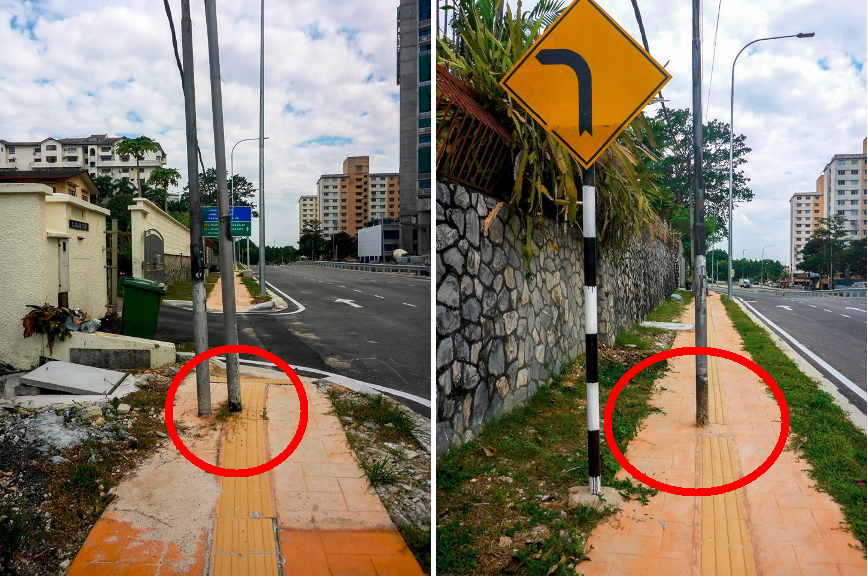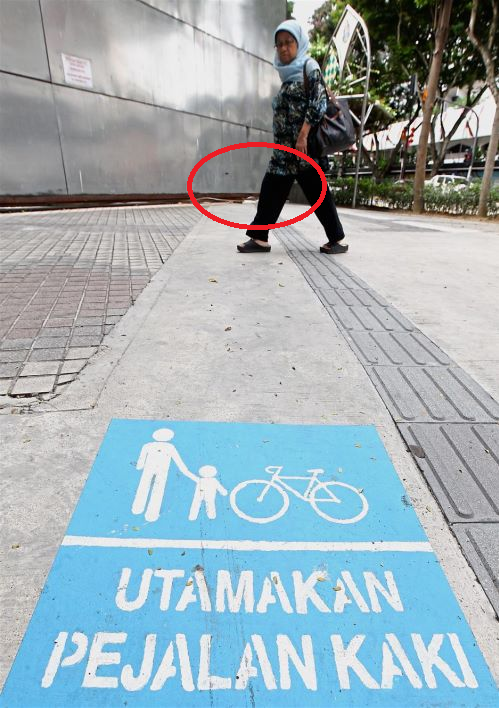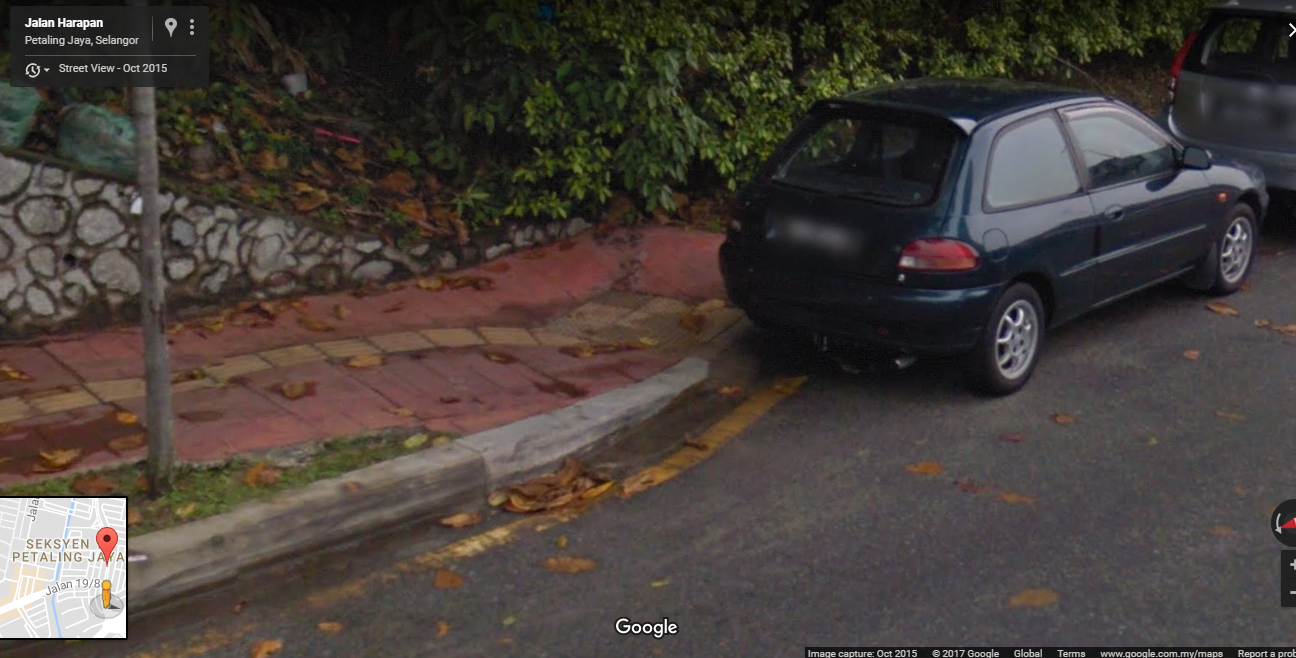OKU facilities that are more dangerous than helpful to Malaysians
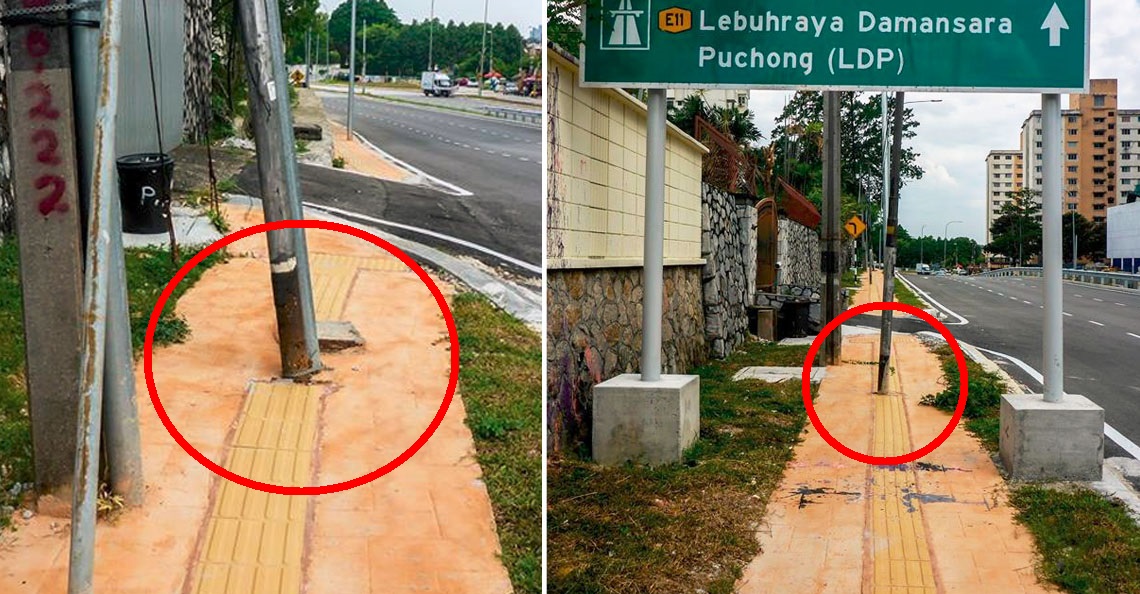
- 3.5KShares
- Facebook3.4K
- Twitter23
- LinkedIn23
- Email27
- WhatsApp77
[UPDATE 05/08/2017] CILISOS reader Azam Alias shared this one. Photo was taken in Bangi.

If you have passed by Jalan Harapan, Petaling Jaya, you may have scratched your heads at the strange positioning of this tactile walkway…
The photos, uploaded by Facebook user SK Yeong, show a tactile walkway for people with visual impairment, but it looks as though the builders decided to add a challenge to it by laying them in the way of some lamp posts. SK told CILISOS he goes to the area once or more times per week to visit his mom-in-law in a nursing home at Jalan Harapan.
“The paving would be pretty recent from the fresh look of pathway.” – SK Yeong told us on FB messenger
We’ve reached out to MBPJ for a comment but they have not responded at this time of writing (we’ll update when they do). Despite their good intentions, the authorities may have overlooked certain details which could affect the accessibility of people with visual impairment. But it’s not just PJ…
We found weirder tactile placements elsewhere O.o
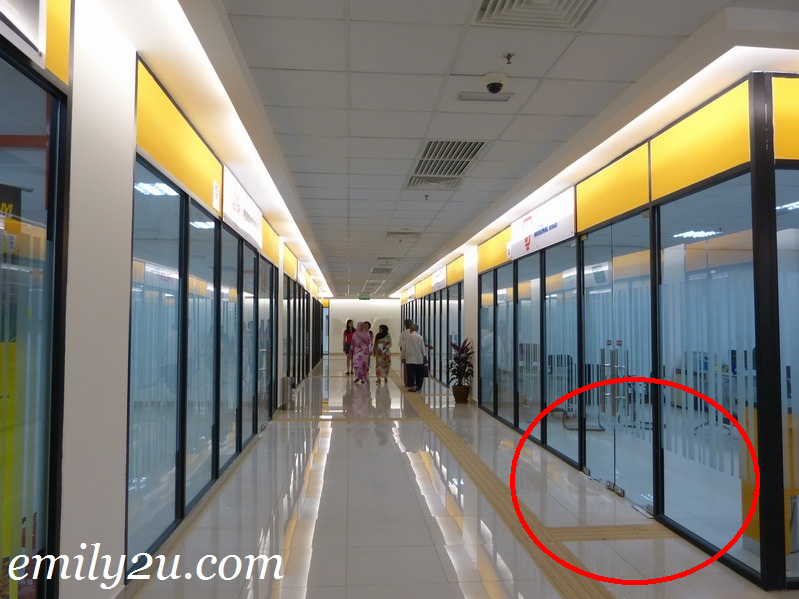
Tactile walkway leading right into a glass wall at the Urban Transformation Centre Perak. Image from emily2u.com
The point of having tactile walkways (pioneered in Japan, btw) is for the safety and convenience of people with visual impairment, so it’s really mystifying as to WHY they were made unsafe and inconvenient by laying them in the path of poles or glass doors (pic above). People could actually get hurt walking into them, worries the Malaysian Association for the Blind (MAB) Perak Chairman Datuk Ahmad Mohd Salleh.
Here’s another one he pointed out outside the Ipoh Central Market, along the Jalan Dato Onn Jaafar, which leads into a lamp post:
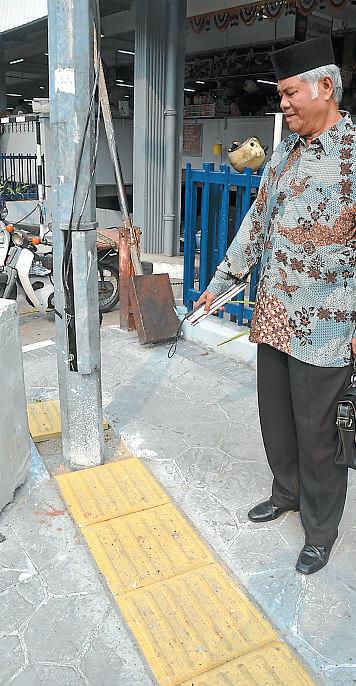
MAB Perak Chairman Datuk Ahmad pointing at the tiang in the middle of a tactile path in Ipoh. Image from starproperty.my
And here’s one in Brickfields, KL, which leads into a steel wall. Granted if it is a construction barrier it is not permanent, however its presence seriously hampers people’s walking routines. We have to wonder whether its temporary nature is more dangerous than a permanent structures, in fact (coz temporary structures may not be sound, they could be moved to different places each day).
“These are a perfect example of a design failure,” said South African urban planner James Speirs, who is based in KL. He realised that the city government gave a lot of importance to motorists.
“I have seen tactile paving that leads up to a zinc fencing, a wheelchair ramp that slides straight into a concrete pillar and steel fencing that goes nowhere. This showed pedestrians were not given much attention in city planning.” – James Speirs, Urban Planner, The Star
Datuk Ahmad of MAB Perak suggests that the authorities consult the visually impaired community and people with other types of disabilities before they start work on a public place. He added that the MAB and other associations have the necessary expertise and often offer free consultation to ensure a building is disabled-friendly! But enough about the authorities…
Obstacles are put in the way by inconsiderate citizens too
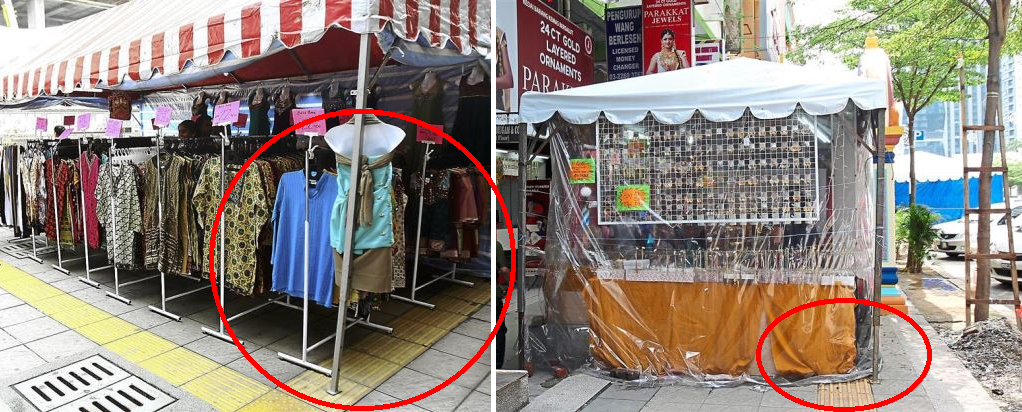
Heckin’ bamboozled. Images from starproperty.my and The Star
The photos above were taken at Brickfields according to news reports. It seems some vendors there have no regard for the purpose of the tactile paving, upsetting the community of people with visual impairment, activist G. Gunabalan said. On top of that the MAB has its HQ in Brickfields. A resident stated that some stalls even extended all the way to the end of the road kerb, so pedestrians have to walk on the road to pass by.
However, then KL Mayor Datuk Seri Ahmad Phesal Talib (this was reported in 2013) warned vendors who opened the stalls that action would be taken against them. While it is not wrong to open stalls (they are allowed to open a 3m x 3m space during festive seasons), it is against the rules to block walkways and tactile paving.
“We are very serious about keeping the tactile paving for the blind clear of any obstruction. Priority must be given to the blind and pedestrians.” – Datuk Seri Ahmad Phesal, then KL Mayor, starproperty.my
Datuk Ahmad Salleh of MAB (different guy) also highlighted the importance of clearing obstacles NEAR the paving.
“Around 0.6m on both sides of the paving should be clear of any obstacle, because the visually impaired person will walk along the tiles. Unfortunately, some of the stand-up banners are placed near the tiles, and this could cause the visually impaired person to bump into it.” – Datuk Ahmad Salleh, Chairman of MAB Perak
*He was referring to banners put up in UTC Perak that were too close to the tactile walkways (pic below):
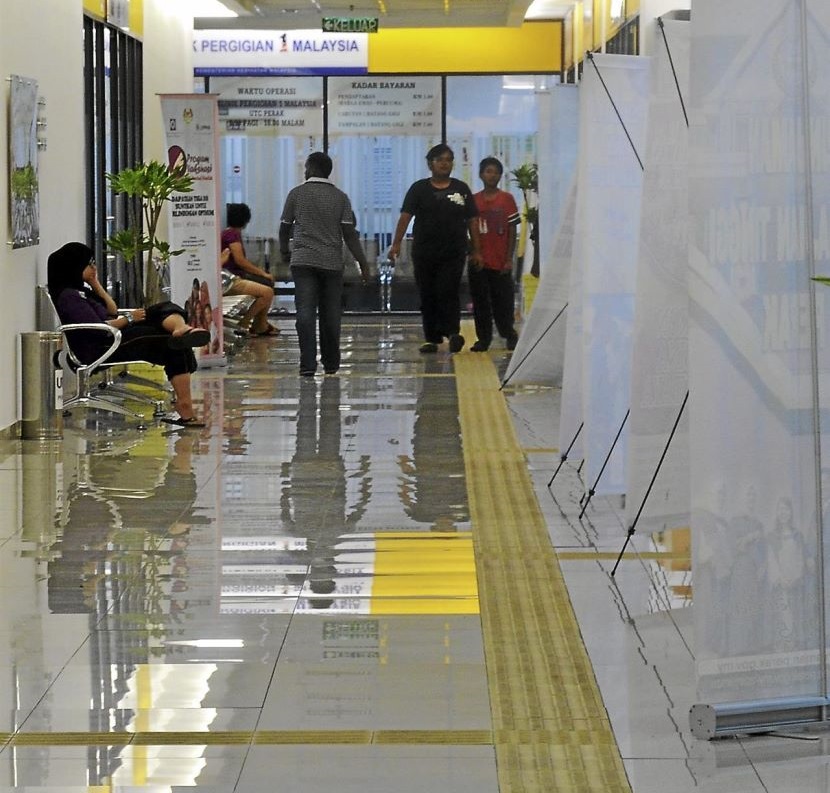
Banners not ON the walkway, but close enough for someone to knock into it. Image from starproperty.my
And of course it’s not only folks with visual impairment who have a hard time. Here are some examples of people who use wheelchairs who wish people would understand that ramps too steep could cause a wheelchair to topple backwards, and that people would stop parking in front of a ramp, blocking it.

(Left) Steep ramp at TNB Penang and (right) inconsiderate motorist blocking ramp. Images from wapenang.blogspot.my and Borneo Post
As a matter of fact, a minimum 1:12 gradient is specified in the Malaysian Code of Practice on Access for Disabled Persons to Public Buildings. The Uniform Building By-law 34A (UBBL 34A) stipulates that all public buildings must comply to this.
By just being mindful of our surroundings, we’re already helping them a lot
Slowly the government is trying to be more inclusive of the 37,340 OKU registered under the Welfare, Women and Community Wellbeing Ministry, as they made some changes, such as JPJ making it a requirement for driving schools to be disabled-friendly, most recently.
However, there still needs to be more awareness among the rakyat at large, said Isak Ngau, special education teacher and organiser of the national White Cane Day (a 3-day event dedicated to increasing public awareness of the visually-impaired). There are reports that Malaysians are often not aware or outright abuse the facilities meant for the OKU. We may not be in charge of town planning and stuff, but as civic-minded Malaysians, perhaps we could try to be sensitive to needs of the OKU community:
“For example, don’t block the tactile paving on the sidewalk with garbage cans or cars. We need it to get around.” – Isak Ngau on The Borneo Post
Mobility is the major problem faced by the visually impaired community at the end of the day. If we could just be more aware of our surroundings and not block their designated walkways, we are ensuring their comfort a great deal more.
- 3.5KShares
- Facebook3.4K
- Twitter23
- LinkedIn23
- Email27
- WhatsApp77

